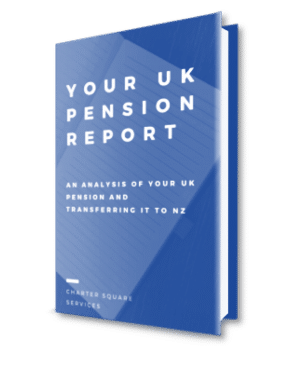Pension transfers are complicated involving multi-jurisdictional legislation and rules governing transfers and pension schemes, as well as individual rules within the different QROPS. This complexity creates a number of areas that you need to be wary of.
Trap 1: The surprise tax bill
Many people are surprised to hear that they could have a tax liability when transferring their UK pension to New Zealand. They are even more surprised to hear that this tax bill cannot be paid directly out of the transferred funds.
You need to understand the tax consequences of a transfer because if you create a tax liability from transferring your UK pension that you cannot afford to pay this could have severe consequences. We strongly recommend that you get a full tax review done before transferring.
Trap 2: Hidden fees
Not all QROPS schemes have the same fee structure and it is often very hard to compare them. Our experience has shown that the key fees that people need to understand are:
- Exit fees from UK pensions – often UK schemes might be under funded or are with profits schemes, in these instances there might be a penalty for exiting the UK scheme. It is important to understand these penalties and what will happen with them over time.
- Entry and exit fees from New Zealand schemes
- Foreign currency fees – these are often hidden from sight and can be significant. The lowest that we have seen is 0.14% above wholesale rates, although there are some providers in New Zealand that are charging a 2% margin on converting sterling to New Zealand dollars on top of the margins the banks are taking.
- Annual management fees – these can vary depending on the type of scheme and the requirements that the scheme has. Therefore, it is often the case that the more complex the scheme and/or underlying investments the higher the annual fees. It is important to be aware of exactly what you are paying for. Some schemes will also offer ongoing fee discounts for clients with larger balances so it pays to be aware of your purchasing power when making a decision.
Trap 3: Rule changes leaving you stuck in scheme
There have been many examples in recent history of people getting stuck in their pension schemes as rules changed, these include those who:
- Transferred their UK pensions to KiwiSaver schemes
- Have an unfunded UK pension scheme (such as an NHS, teachers or civil service pension)
- Have had their UK pension put into the Pension Protection Fund
Being stuck in a scheme usually means that your options are more limited. For example, those that transferred their UK pensions to a KiwiSaver scheme can’t move out and so can not take advantage of the pension freedoms rules that were introduced for QROPS in 2017.
Similarly, being in the NHS scheme does not mean you will not be paid your pension, it just means you might not be able to structure your tax in a way that is most beneficial to you.
You need to constantly sit down with your financial adviser to understand any rules changes on the horizon as well as constantly reviewing whether the pension that you have is right for you. So even if you decided not to transfer in the past, that decision might not still be right for you.
Trap 4: Transferring to a scheme that locks you in
Some schemes have underlying investments that lock the member into the investments or the platforms that provide the accounting and servicing. A number of people have been particularly caught out by these when they transferred to a UK SIPP or a Maltese or Gibraltar based pension. Many of the pensions are invested through life bond wrappers which lock member into the wrap platform for 7 years or more. Investors then find to when they go to leave these pensions that there are significant exit fees. If the scheme, or your adviser, cannot tell you how long you will be locked in the scheme we would recommend you take no action until you know the answer.
If you have transferred into a scheme that has locked you in that does not mean you should not review your position in that scheme. Often through careful planning you can find other strategies that can recoup some of the significant exit fees. We recommend you talk to a qualified financial adviser if you find yourself in this position.
Trap 5: Investing in funds that are not retirement appropriate
Pension schemes are retirement vehicles and the legislation and rules that surround them recognise that. The funds that you invest in within the schemes should be appropriate for your retirement. It is important to know the following about the funds you invest in:
- Are the underlying investments retirement appropriate (is the fund significantly exposed to riskier assets, like crypto or derivatives)
- Does the actual investment mix follow the investment guidelines set by the fund
- Is the fund leveraged (effectively borrowing to invest)
- Are the assets liquid and therefore can be sold easily if required to be
Working with a financial adviser ensures that you understand these risks and build an investment portfolio that will suit your retirement.
Trap 6: Giving up guaranteed benefits forever
Many pensions in the UK offer guaranteed benefits and these can come in a variety of forms, like:
- Defined benefit schemes
- Guaranteed minimum pension (GMP) benefits
- Guaranteed Annuity Rates (GARs)
When you transfer out of these types of pensions you give up the rights to the guaranteed benefits and end up with a pot of money that you must manage for yourself.
Some of these benefits can be very valuable, we have seen instances of GARs being 15-17% per annum, that means that when the pension pot is converted into a guaranteed annuity then for every GBP1,000 invested the annuity provider will pay between GBP150 and GBP170 a year for the rest of the persons life. A lot of these policies were written in the 90’s when interest rates were much higher, and so now they are very valuable.
Similarly, before transferring out a final salary pension scheme and giving up the certainty in the payment (and the protection of the pension protection fund) you must be certain that the transfer value, the tax consequences and your future position are relatively certain. We have seen instances where the transfer value has ranged from 15 times the annual benefits up to 45 times the annual benefits. With such large differences in the transfer values, let alone assessing the tax consequences there is no one size fits all answer to transfer defined benefit schemes.

